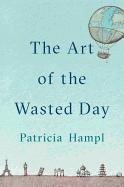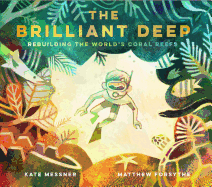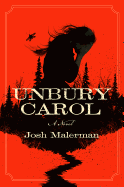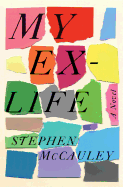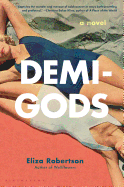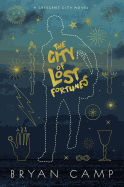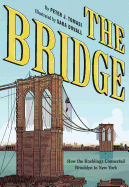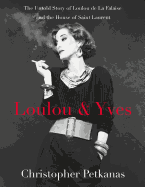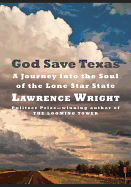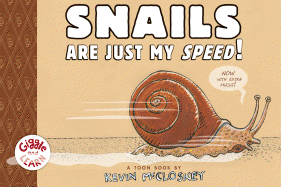Tuesday, May 8, 2018
Several years ago, I was in a small Italian restaurant with my boyfriend, and I became intrigued by the grappa selection. "Who were we with that night we drank all that grappa?" I asked. Nick frowned and replied, "I've never had grappa." That couldn't be right, I insisted. I harbored a distinct, albeit foggy, memory of a very long dinner involving copious amounts of the stuff.
It popped into my head later that what I remembered was the hazy dream of three days spent reading Herman Koch's The Dinner (Hogarth, $16), which is drowning in grappa. Dream states are a fitting analogy for the reading process, and recently, I was impressed to discover two books that have translated that Morphean experience onto the page.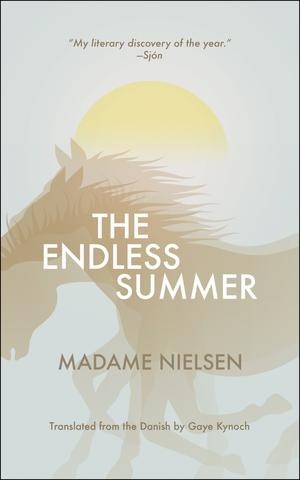 In The Endless Summer (Open Letter, $14.95), Danish performance artist Madame Nielsen stretches long sentences into an evocative, nostalgic trance. "It begins with a boy, a young boy, who is perhaps a girl, but does not know it yet," she writes before drifting into elegant rhapsody about a summer of love, tragedy, desire, longing--the tender aches of youth that never really fade. The season transpires as a coming-of-age moment for this young person, and for those he or she encounters. Yet it persists deep into the rest of their lives through the viscosity of memory.
In The Endless Summer (Open Letter, $14.95), Danish performance artist Madame Nielsen stretches long sentences into an evocative, nostalgic trance. "It begins with a boy, a young boy, who is perhaps a girl, but does not know it yet," she writes before drifting into elegant rhapsody about a summer of love, tragedy, desire, longing--the tender aches of youth that never really fade. The season transpires as a coming-of-age moment for this young person, and for those he or she encounters. Yet it persists deep into the rest of their lives through the viscosity of memory.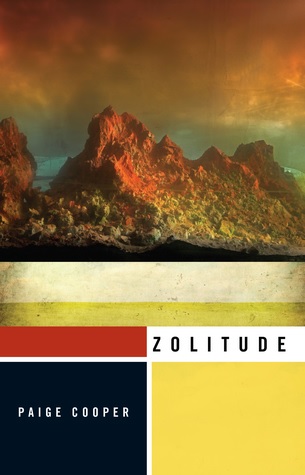 Similarly, the stories of Zolitude by Paige Cooper (Biblioasis, $14.95) lure readers through dreamy landscapes that are as concerned with texture and atmosphere as the characters inhabiting them. Between the synthetic hum of space-age machinists negotiating work and sex in "Pre-Occupants," and the soaring stakes of solitude in "Thantos," I can't help but compare Cooper's dazzling numbers with the neo-psychedelic haze of dream pop artists like Beach House and London Grammar.
Similarly, the stories of Zolitude by Paige Cooper (Biblioasis, $14.95) lure readers through dreamy landscapes that are as concerned with texture and atmosphere as the characters inhabiting them. Between the synthetic hum of space-age machinists negotiating work and sex in "Pre-Occupants," and the soaring stakes of solitude in "Thantos," I can't help but compare Cooper's dazzling numbers with the neo-psychedelic haze of dream pop artists like Beach House and London Grammar.
Whether waking from a dream or doubting a memory, I can't think of two books better to keep you company. --Dave Wheeler, associate editor, Shelf Awareness
Country Dark
by Chris Offutt
If ever a novel were perfectly titled, it's Chris Offutt's Country Dark, a grimly realistic portrait of a man's desperate fight to save himself and his struggling family from extinction, deep in the beautiful and dangerous Kentucky hills.
Freshly returned from the Korean War in 1954, just shy of his 18th birthday, a veteran known only as Tucker traverses the lush countryside on foot, heading homeward, toward an uncertain future. Along the way, he rescues an adolescent named Rhonda from the advances of her lecherous uncle, and the young pair impulsively decide to marry. In a matter of barely 10 years, their union produces five children, four of whom, tragically, are profoundly disabled. To support his family, Tucker works running moonshine to Ohio and Michigan.
When violence erupts as state welfare officials threaten to remove Tucker's children from the home, he's placed in a compromised position. Just as he did when surviving fierce hand-to-hand combat in Korea, Tucker must rely on his wits and his fighting skills in a hostile new environment to keep himself alive.
Offutt (My Father the Pornographer), who grew up in a small town in eastern Kentucky, has a native's instinct for the region and its inhabitants. His descriptions of the natural environment are vivid and yet understated. For instance, Tucker relaxes in woods that "reverberated with the droning hum of locusts, rising and falling as if they were a chorus led by a master insect." Country Dark is a taut, well-constructed novel easily consumed in one sitting. There are villains aplenty, a deeply flawed protagonist but, in the end, only survivors. --Harvey Freedenberg, freelance reviewer
Discover: There's a timeless feel to Chris Offutt's novel about a man's fight for survival in the unforgiving world of the Kentucky hills.
Unbury Carol
by Josh Malerman
Unbury Carol by Josh Malerman (Bird Box) is a dark, part-western, part-horror, part-murder mystery. Ever since Carol Evers was a young child, she's suffered from a strange condition, often brought on by stress: she falls into a deep, death-like coma. She's able to hear people around her, smell things and sense touch while in this state. The only signs of life she shows are the faintest breathing and heartbeat, which come so infrequently they are missed by the casual observer.
Very few people know of her condition, so when Carol falls into yet another coma, her conniving husband, Dwight, sets in motion a plot to collect her money. However, when word of Carol's death reaches her former lover Moxie, an outlaw who lives down the Trail, he is sure it is just another coma and races to rescue the woman he once turned his back on.
Malerman has filled this creepy and unsettling tale with many memorable characters. Lafayette is the local witch, Smoke is an evil outlaw and Sheriff Opal is the good lawman who questions everything. The road Moxie must travel, too, is a character in itself, filled with shadows and unseen things that will haunt readers for some time.
The most unsettling aspect of the story, however, are moments narrated by Carol as she remains stuck in her coma-like condition as people act and events proceed around her. It produces an utterly claustrophobic and nightmarish atmosphere.
For those who enjoy horror or westerns, Unbury Carol offers both, wrapped around a love story that extends beyond the living to those who are in a pre-death condition. --Lee E. Cart, freelance writer and book reviewer
Discover: When Carol falls into a death-like state, her husband tries to bury her alive, but an outlaw former lover races to rescue her.
My Ex-Life
by Stephen McCauley
My Ex-Life by Stephen McCauley (The Object of My Affection) explores an unusual relationship between a gay man and his ex-wife with wit and wisdom. David rents a carriage house with amazing views in San Francisco and enjoys his career, helping teens apply to colleges. He has felt at loose ends, though, since breaking up with his partner. To make matters worse, his landlord is selling the house, which means David has to move.
In a seaside town on the East Coast, David's ex-wife, Julie, is also struggling in mid-life. Her new ex-husband wants to sell the big house she loves. He's also threatening to fight for custody of their teen daughter, Mandy. Julie is renting out rooms on Airbnb in the house to make some extra money, but things are getting desperate. When she calls David, after 20 years apart, to ask him to help Mandy with her college applications, he jumps at the chance. It's just the kind of change he needs. Soon, the three of them are living together in the big house, along with an odd assortment of paying guests.
McCauley has a remarkable talent for telling a story filled with insights into human behavior and laced with plenty of humor. For instance, Mandy describes her friend like this: "Lindsay considered herself a 'romantic,' which meant she was a Disney princess who'd read her mother's copy of Fifty Shades of Grey." This fun, clever story about a postmodern permutation of family is also warm and perceptive. --Suzan L. Jackson, freelance writer and author of Book By Book blog
Discover: A gay man moves in with his ex-wife and her daughter in this funny, insightful story about family and friendship.
Demi-Gods
by Eliza Robertson
Willa is nine years old in 1950 when she first meets Patrick, the son of her mother's boyfriend, at her family's beach house in British Columbia. He persuades her to take a boat ride during which she's stung by a jellyfish, then convinces her to urinate on the wound. Their relationship gets more bizarre, painful and intimate from there. They meet only six times throughout their lives, and they forget each other when they're apart, but for Willa their time together is all-consuming. Even as a child, Patrick is unnervingly self-assured, both reckless and controlled. Willa is observant and strong-willed, committed to proving that she's Patrick's equal. But over 11 years, Patrick manipulates Willa into chasing him, abuses her when she does and gaslights her into believing it's her choice.
With themes of divergent pairs--Castor and Pollux, Canada and California, Willa and Patrick--Eliza Robertson's (Wallflowers) first novel, Demi-Gods, depicts the push and pull of magnetic relationships. In early chapters, Robertson captures the awkwardness of adolescence, as Willa wonders how to be a woman while watching her gorgeous sister and her mother's awkward attempts at glamour. Most compelling are Willa's later meetings with Patrick as young adults. There's a tension to Robertson's writing that makes their interactions always unsettling, even if Patrick's actions, as Willa says, are "minor." Throughout, she explains how confusing predatory attention can be: "The quality... disturbed me--but I focused on that fact of it, which surrounded me in a light not as pure as the sun, maybe, but like one of those heat lamps." --Katy Hershberger, freelance writer and bookseller
Discover: Eliza Robertson's first novel tackles sexual awakening and abuse in the 1950s.
Science Fiction & Fantasy
The City of Lost Fortunes
by Bryan Camp
With mysticism emanating from every page, Bryan Camp paints a stunningly deceptive post-Katrina New Orleans in his debut, The City of Lost Fortunes. Deities from all walks of mythology weave among the realms of the living and dead as humans go about their days.
Camp's protagonist, Jude Dubuisson, exists in both the sphere of mortals and that of gods. He's never met his father but possesses a special gift passed through their shared lineage; he can find lost things. This ability serves him well in conjunction with his earthly role as a magician, but it's turned on its head when Hurricane Katrina hits the Big Easy. With the chaos, destruction and all-around havoc, losses are everywhere: people, things, dreams, futures. Jude is overwhelmed by his power and the sheer magnitude of destruction. He remains quietly in his corner of New Orleans until he is summoned to a decrepit shotgun house hidden in the Garden District. Here he finds five deities around a card table, with an open seat for him. The game they're playing is unlike anything Jude's ever experienced: Fortunes. "Nothin's wild, everything's open. Prosperity trumps calamity," Dodge, the Fortune god, informs the players. From there, Jude is pulled back into a world he's tried so hard to leave behind.
Camp succeeds in creating an alluringly magical fantasy realm, and he also knits it seamlessly into the reality of a vibrant New Orleans. The City of Lost Fortunes is a composition as stunning as the music that springs from its Louisiana setting. Play on, Bryan Camp, play on. --Jen Forbus, freelancer
Discover: In a murder mystery wrapped inside a fantasy novel, a demi-god is endowed with the power to find the lost.
Graphic Books
The Bridge: How the Roeblings Connected Brooklyn to New York
by Peter J. Tomasi, illus. by Sara Duvall
An iconic landmark beloved by many for its panoramic views of the New York skyline, the Brooklyn Bridge was the longest suspension bridge in the world at its opening in 1883, and is now one of the oldest in the nation. Its history inspired DC Comics stalwart and native New Yorker Peter J. Tomasi to tell its story in The Bridge. This beautifully rendered graphic novel, illustrated by Sara Duvall, details how this engineering marvel was brought to fruition.
John Roebling, a prominent engineer, had a vision of connecting Manhattan and Brooklyn by a suspension roadway, but died before work began on the project. His oldest son, Washington, took over as chief engineer, erecting the Manhattan and Brooklyn caissons (watertight retaining structures) before nearly succumbing to caisson disease (decompression sickness). With cost overruns and political pressure from the bridge's ruling board, Washington's wife, Emily, assumed control (under the watchful guidance of Washington from an upstairs window) and saw the project to its completion.
Duvall's drawings show dangers the builders faced: equipment failures, safety mishaps and sickness claim the lives of more than 20 men; her colored panels lend the book a nostalgic feel. The completed bridge, framed in the blue and violet glow of a Manhattan sunset, is revealed in the picture-perfect scene most have come to associate with it.
As Tomasi cites from David McCullough's The Great Bridge: "It so happens that the work which is likely to be our most durable monument, and to convey some knowledge of us to most remote posterity, is a work of bare utility; not a shrine, not a fortress, not a palace, but a bridge." --Nancy Powell, freelance writer and technical consultant
Discover: The graphic history of how the vision and fortitude of a family resulted in the building of a quintessential landmark.
Biography & Memoir
The Art of the Wasted Day
by Patricia Hampl
As a child preparing for her first confession, essayist Patricia Hampl (The Florist's Daughter) learns from the Examination of Conscience that daydreaming is a sin. "I don't hesitate. I throw my lot with the occasion of sin. I already know (or believe--which comes to the same thing in my Catholic worldview) that daydreaming doesn't make things up. It sees things...."
Decades later, she had her first panic attack. In the aftermath, she rested, and remembered the pleasure of her childhood daydreams. She returns to what she's read of Michel de Montaigne, the 16th-century French inventor of the essay, whose work tried on idle thoughts, wandering from one to the next, to see where they would go.
This is not a linear memoir, but rather, as she says of another book, "a meandering bunch of narrative snippets and essays." She travels to visit friends in the Czech Republic and to the homes of writers she's loved--the Ladies of Llangollen, Gregor Mendel and Montaigne. One thought inspires another: books she loves, her fascination with nuns, her writing life, family stories and her new widowhood after a long, happy marriage.
"Life is not a story, a settled version. It's an unsorted heap of images we keep going through... that float to the surface of the mind, rise, drift--they are the makings of a life, not of a narrative." This is an enjoyable, idiosyncratic journey of a book, the kind that recommends many other books and places, and that may inspire readers to some similar thoughtful wanderings of their own. --Sara Catterall
Discover: Daydreams, reading, travel and memories inspire each other in this contemplative essayist's memoir.
Loulou and Yves: The Untold Story of Loulou de la Falaise and the House of Saint Laurent
by Christopher Petkanas
Loulou de la Falaise was born in England in 1947 to a nebulously titled family. Upon divorcing, her parents abandoned her and her brother to foster care. At age 19, Loulou married a hereditary Irish knight but left him when she realized that she had no interest in the hostess's life. She became an "it" girl in Swinging London, and experimented with drugs, alcohol, sex and, most crucially, her wardrobe: "Three pins and two pieces of cloth, and she has four ravishing evening dresses," gushed an admirer. She was a fashion editor's assistant at the British magazine Queen, and in 1972 was invited to work for the taste-making Paris designer Yves Saint Laurent. So began an affectionate and mutually nonthreatening working relationship that left its mark on the scene. Fashion editor André Leon Talley put it this way: "As Yves's creative collaborator for three decades, Loulou helped define twentieth-century fashion."
Like all good biographies, Loulou and Yves: The Untold Story of Loulou de la Falaise and the House of Saint Laurent is a portrait of not just its subject, who died in 2011, but of her place and time. Studded with photos both black-and-white and color, the book is cobbled together from print sources; interviews with Loulou's family members, friends and associates; and blocks of connective tissue supplied by Christopher Petkanas, who knew his subject personally. The result is a crackling good read with a pleasing superabundance of salt, wit and dish; even the contributor bios are snarky. --Nell Beram, author and freelance writer
Discover: This oral biography of Loulou de la Falaise, the fashion icon and right-hand woman of designer Yves Saint Laurent, is a sprawling entertainment.
History
God Save Texas: A Journey into the Soul of the Lone Star State
by Lawrence Wright
Pulitzer Prize-winner Lawrence Wright (The Looming Tower, The Terror Years) takes a breather from his incisive reporting on al-Qaeda to focus his considerable wit and insight on his home state. God Save Texas is a personal peek behind the curtain to see what makes the country's fastest-growing state tick. Raised in Dallas, living in Austin, and a former writer for Texas Monthly, Wright somewhat reluctantly bleeds Texas. He even plays keyboard for the Austin rockabilly band WhoDo. Following a scattershot path, he explores all the things that make Texas such a pivotal place to be reckoned with: oil, Spanish missions, Houston, modern presidents (LBJ, Bush 41, Bush 43), guns, feminism, race, politics, the Mexican border, artsy-fartsy Marfa, Big Bend National Park and, of course, music (e.g., Buddy Holly, Roy Orbison, Bob Wills and that ageless icon Willie Nelson). Big state--big list.
Although generally lighthearted, Wright can't help but spend a few chapters reviewing the bizarre politics of Texas in the age of Trump. When its legislature met recently, the key agenda items were immigration, abortion, open carry, school bathrooms and feral hogs--though not necessarily in that order. Generous with bon mots, archetypal woodcut illustrations and a wealth of "talkin' Texas" arcana (including journalist Molly Ivins's description of one attorney general who was "so mean he wouldn't spit in your ear if your brains were on fire"), God Save Texas is a wonderfully entertaining trip with arms-length skepticism--a love letter with bite. Wright's enigmatic Lone Star State might be summed up in this label on an Austin restroom door: "Whatever--just wash your hands." --Bruce Jacobs, founding partner, Watermark Books & Cafe, Wichita, Kan.
Discover: Pulitzer Prize-winner Lawrence Wright traverses his state digging playfully and ominously into those things that make it both "dangerous and magnificent."
Essays & Criticism
How to Write an Autobiographical Novel: Essays
by Alexander Chee
How to Write an Autobiographical Novel, an essay collection by novelist Alexander Chee, bears all the hallmarks of the writer's intelligence, curiosity and precision with language.
In these 16 essays, Chee (Queen of the Night) delineates the creative and emotional journey of a half-Korean gay kid from conservative small-town Maine, who emerges as an important voice in American literature. Chee maps the relationship between identity, activism, writing and literary prestige. In a spirit of playful yet earnest self-interrogation, he picks at his own façade in the early stages of his career. In "My Parade," he writes of venturing outside his social class trying to infiltrate the country's literary ranks: "While I didn't have their background, what I did have in these social settings were my looks, a sharp eye, a sharper tongue, and a penchant for making a spectacle of myself." In "Mr. and Mrs. B," he recalls working as a waiter for William Buckley--the famous conservative--to support himself as a writer. That Buckley denigrates AIDS victims while skinny dipping with young male servants is not lost on the impishly perceptive Chee.
As much as Chee's essays exhume the autobiographical details of his life, collectively they're concerned with something greater than autobiography--the struggle and triumph of the novel. In the collection's titular essay, he explains that writing fiction is necessary "because the ways you are human are not always visible to yourself." Entertaining and illuminating, How to Write an Autobiographical Novel excites and inspires creative thinking. In equal measure, the collection's humanity and grace will tug the heartstrings of the general reader. --Scott Neuffer, writer, poet, editor of trampset
Discover: Novelist Alexander Chee demonstrates how to transform life into art in this sharp and thoughtful collection of essays.
Children's & Young Adult
The Brilliant Deep: Rebuilding the World's Coral Reefs
by Kate Messner, illus. by Matthew Forsythe
In a visually exhilarating exploration, author Kate Messner (Over and Under the Pond) and illustrator Matthew Forsythe (Warning: Do Not Open This Book!) tell the inspiring story of Ken Nedimyer and the Coral Restoration Foundation.
Nedimyer, son of a NASA engineer, grew up in Florida but, unlike his father, "Ken's dreams weren't in the stars. He loved the ocean." Messner tells her readers, "[h]e watched TV shows about underwater explorer Jacques Cousteau. He visited the beach whenever he could, swimming far out to a world of angelfish and sea stars." Forsythe's illustrations set the tone: calming, inviting colors as a young Ken watches the sun rise over the water; bold, dark colors in an exciting underwater Cousteau adventure.
As Nedimyer grows up, he continues to submerge himself in ocean life. The textures of Forsythe's corresponding illustrations create a feeling of authenticity and seem to pulse with the life that fascinates the adolescent Nedimyer. And when Messner shares the foreboding news, "One summer, hotter than the rest, Ken noticed the corals were losing their color, and there weren't as many fish," a silent, dark double-page spread follows, conjuring thoughts of an eerie, watery graveyard. From this sad, gloomy depth, the story begins to buoy.
The audience learns about live rock farms and staghorn corals. They share in the excitement of Nedimyer's discovery of the coral as well as his experiments replanting them on the dying reefs and the inception of the Coral Restoration Foundation. The intensity increases, the colors brighten and hope emerges from the vivid pages, Messner and Forsythe giving readers cause for jubilation in Nedimyer's adventure. An excellent introduction to environmental awareness and respect, The Brilliant Deep is sure to spark interest and inspire many young readers. --Jen Forbus, freelancer
Discover: The ocean comes alive in this dazzling, nonfiction picture book about the life of Ken Nedimyer and his efforts to save the coral reefs through the creation of the Coral Restoration Foundation.
Snails Are Just My Speed!
by Kevin McCloskey
Do you know that worms are "50 times faster" than snails? Or that snails use their mucus as sunscreen, to fix broken shells and to "build roads?" Or that the Giant African snail (or Tiger snail "because of its stripes") can "grow to 15 inches long?" With Snails Are Just My Speed!, Kevin McCloskey (Something's Fishy; The Real Poop on Pigeons!) publishes his fourth science-based book in his TOON Books Giggle and Learn series. Starring a talkative snail and three science-enthralled kids, Snails Are Just My Speed! uses short sentences, diagrams, illustrations and humorous speech bubbles to describe mollusc life. Additional materials in the back of the book, including a "snails are fun to draw!" drawing guide, may help pique young readers' interest, and parents and teachers will appreciate a "how to read comics with kids" page of reading tips.
McCloskey's signature cartoon-like illustrations are expressive, bringing life to the funny and gross-out facts on every page. His level one "easy-to-read comics," which combine the appeal of graphic novels with the age-appropriate content and text of picture books, use comedy and cool science to draw in reluctant and emerging readers. With information both icky ("Humans make four cups of mucus every day!") and fascinating ("Snails shoot arrows at each other before they make babies. The story of Cupid's arrows may have come from snails' 'love darts' "), you can bet that even the most hesitant kids will want to read all about sensational snails. --Jennifer Oleinik, freelance writer and editor
Discover: Learn all about snails in this funny and informative comic-style book for early readers.



